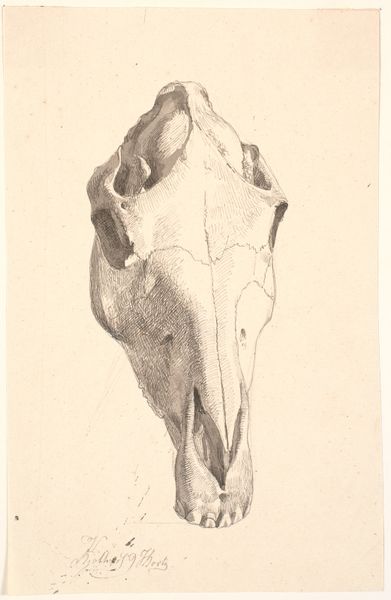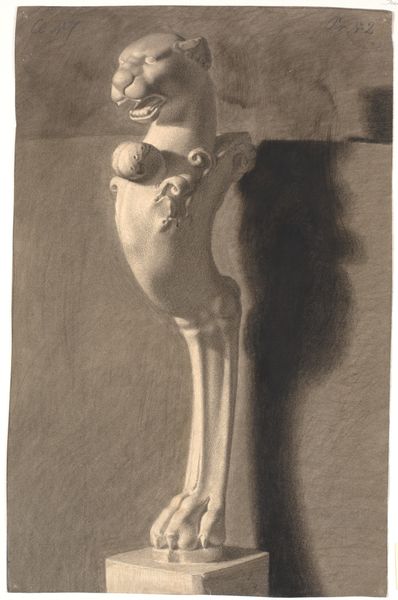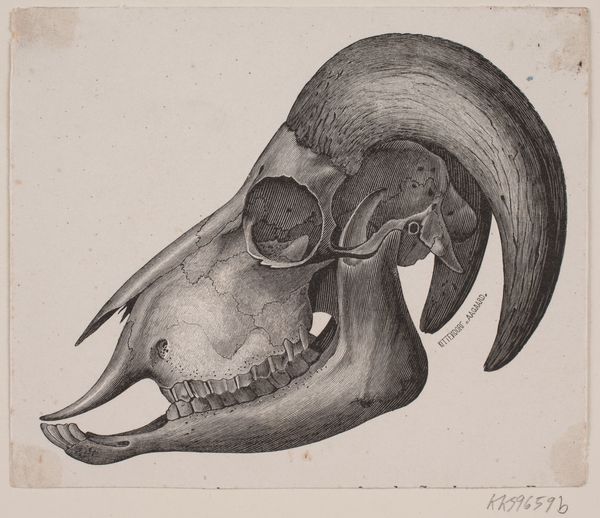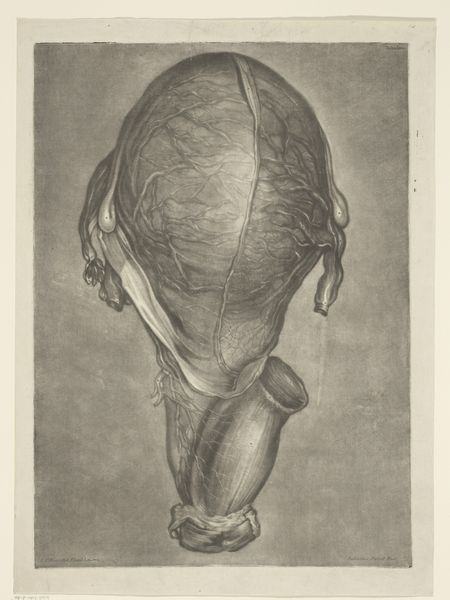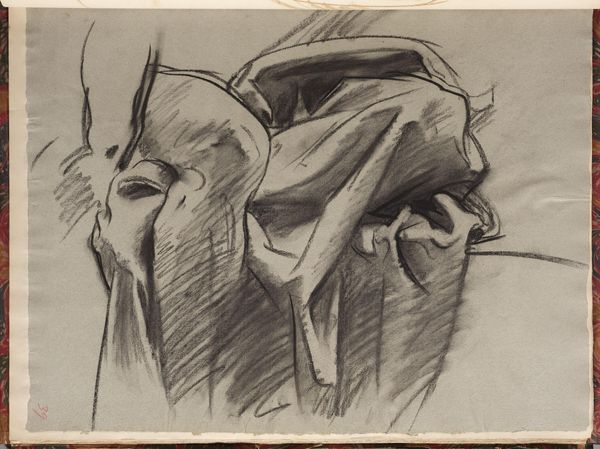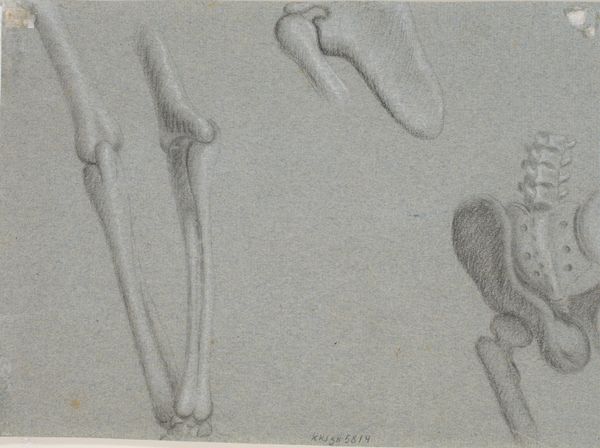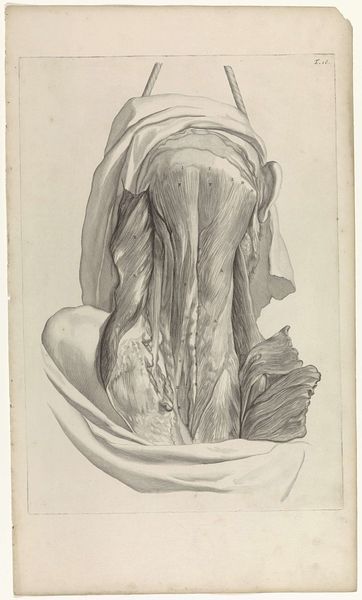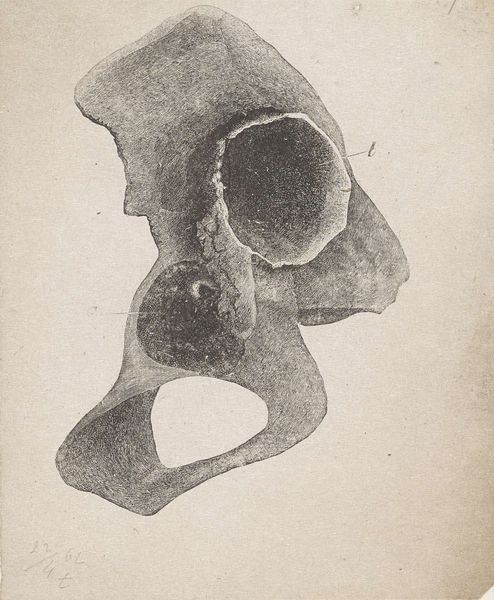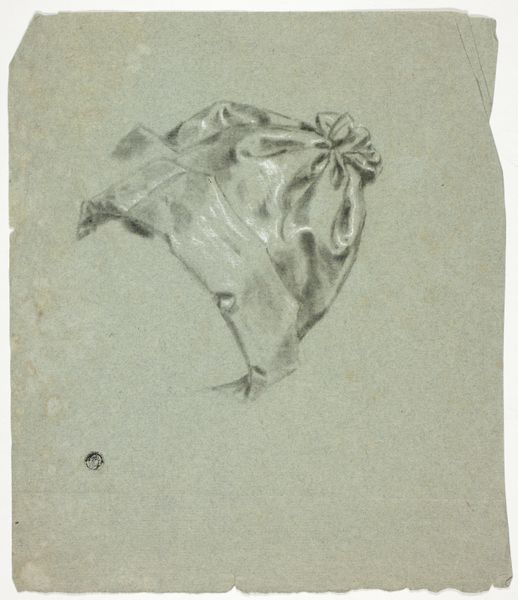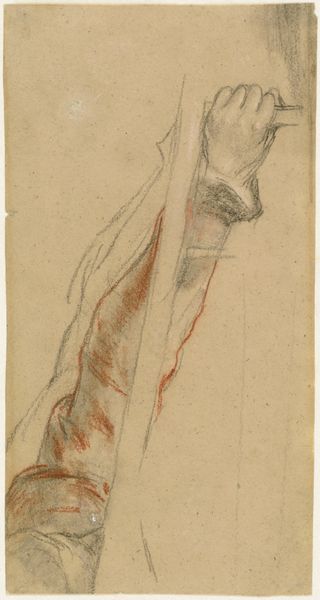
drawing, charcoal
#
drawing
#
landscape
#
charcoal drawing
#
romanticism
#
charcoal
#
watercolor
Dimensions: 596 mm (height) x 441 mm (width) (bladmaal)
Curator: Here we have Johan Thomas Lundbye's "Hestekranium," a drawing rendered in charcoal around 1834. Editor: It’s incredibly stark. The somber shading against the off-white skull creates a rather melancholy mood, a potent meditation on mortality perhaps? Curator: Precisely, I find the work particularly compelling from a compositional standpoint. Note how the artist positions the skull, slightly angled, filling nearly the entire picture plane. The lines and hatching of the charcoal seem to emphasize the play of light and shadow, calling attention to its structural form. Editor: The level of detail is indeed fascinating; I find myself drawn to the tangible representation of organic decay. This horse skull would have been a common sight in a farming community and invites us to consider labor—what tasks were expected of this animal? Its very substance becomes a meditation on its social context. Curator: Well observed. Lundbye's technique further enhances its emotional impact. Look at the deliberate variations in pressure and density of the charcoal, building depth and texture, and accentuating the inherent form of the subject itself. Editor: One could examine the economic infrastructure around livestock in the Romantic era too; after its death, what happens to the body? Even in death, it retains potential for economic resource as its bones and hide are likely sold or reused. How is that labor reflected in this rendering? Curator: An excellent question! The way Lundbye employed the charcoal drawing, so economically, certainly evokes a sense of both intimacy and isolation. There's a directness in the materiality, reducing it down to this striking portrait. Editor: In sum, it is this intersection of utility and loss, perhaps, which makes "Hestekranium" so moving. We recognize the skull as at once organic material and a residue of broader human activity and purpose. Curator: Indeed. It speaks eloquently about nature's power. Editor: And also to what we extract from nature itself.
Comments
No comments
Be the first to comment and join the conversation on the ultimate creative platform.
